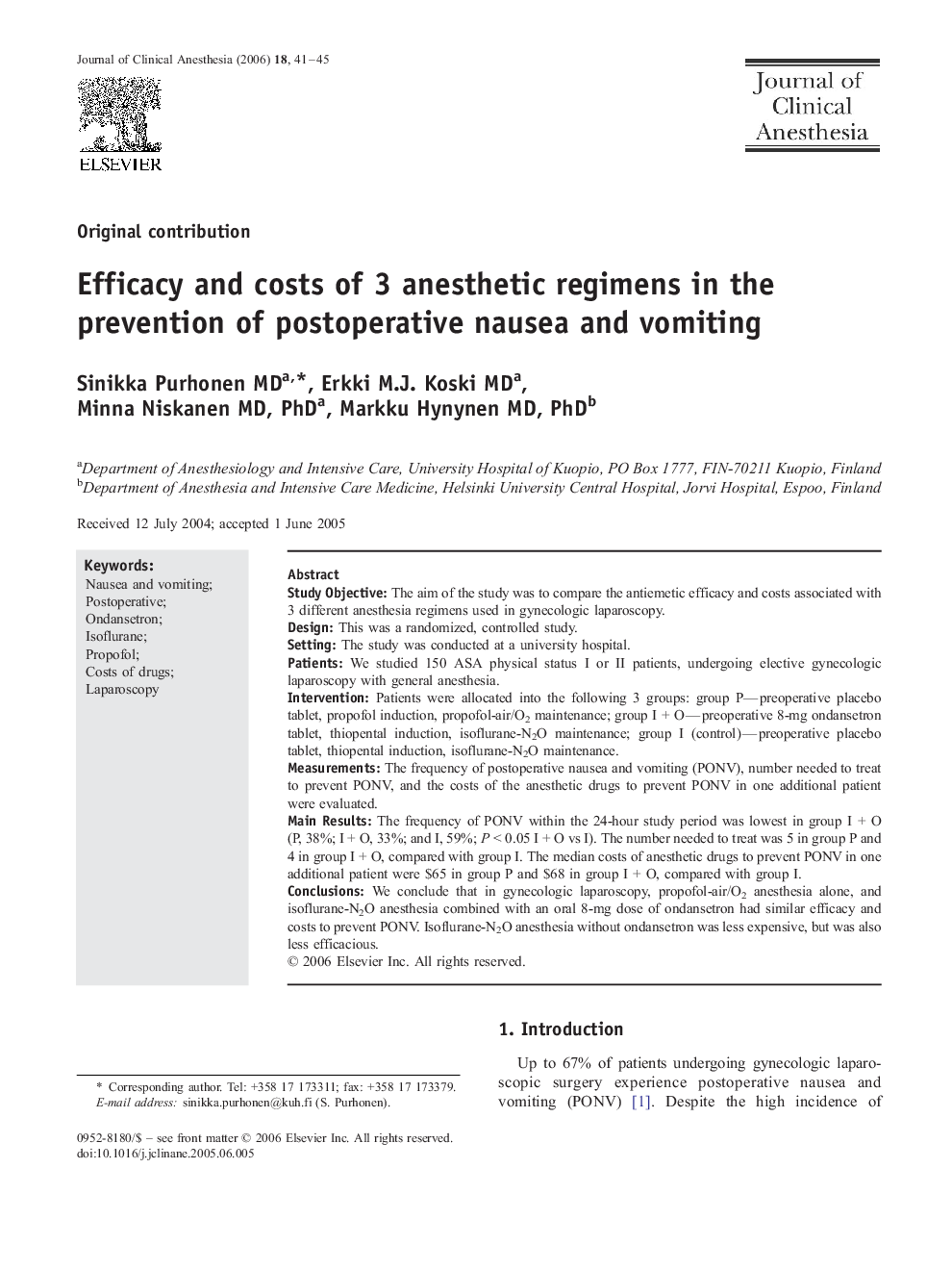| Article ID | Journal | Published Year | Pages | File Type |
|---|---|---|---|---|
| 2764023 | Journal of Clinical Anesthesia | 2006 | 5 Pages |
Study ObjectiveThe aim of the study was to compare the antiemetic efficacy and costs associated with 3 different anesthesia regimens used in gynecologic laparoscopy.DesignThis was a randomized, controlled study.SettingThe study was conducted at a university hospital.PatientsWe studied 150 ASA physical status I or II patients, undergoing elective gynecologic laparoscopy with general anesthesia.InterventionPatients were allocated into the following 3 groups: group P—preoperative placebo tablet, propofol induction, propofol-air/O2 maintenance; group I + O—preoperative 8-mg ondansetron tablet, thiopental induction, isoflurane-N2O maintenance; group I (control)—preoperative placebo tablet, thiopental induction, isoflurane-N2O maintenance.MeasurementsThe frequency of postoperative nausea and vomiting (PONV), number needed to treat to prevent PONV, and the costs of the anesthetic drugs to prevent PONV in one additional patient were evaluated.Main ResultsThe frequency of PONV within the 24-hour study period was lowest in group I + O (P, 38%; I + O, 33%; and I, 59%; P < 0.05 I + O vs I). The number needed to treat was 5 in group P and 4 in group I + O, compared with group I. The median costs of anesthetic drugs to prevent PONV in one additional patient were $65 in group P and $68 in group I + O, compared with group I.ConclusionsWe conclude that in gynecologic laparoscopy, propofol-air/O2 anesthesia alone, and isoflurane-N2O anesthesia combined with an oral 8-mg dose of ondansetron had similar efficacy and costs to prevent PONV. Isoflurane-N2O anesthesia without ondansetron was less expensive, but was also less efficacious.
